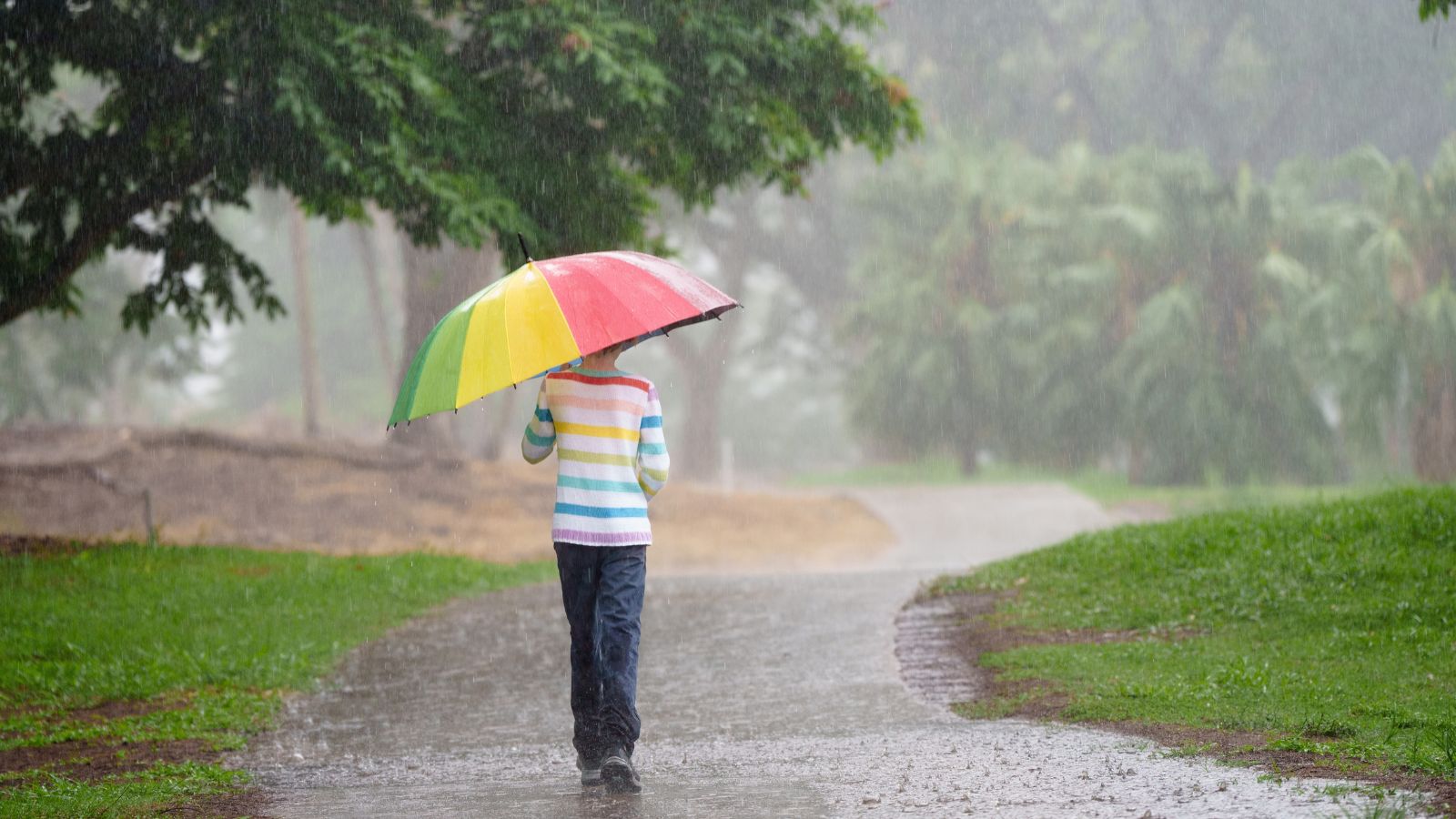The British weather is famous for being notoriously unpredictable, and don’t we know it. One minute, it’s sunny, and the next, it’s raining, so we always have to make sure we bring various layers when we head outside. To understand why this is, here are 19 reasons why British weather is so unpredictable.
Atlantic Influence

As the BBC explains, one of the main contributing factors to the UK’s unpredictable weather is the Atlantic Ocean. Warm ocean currents meet cooler air masses, creating a battleground for different weather patterns. This mix can result in sudden shifts from sunny skies to overcast conditions, making forecasts tricky and contributing to the infamous unpredictability.
Jet Stream Dynamics

You’ve probably heard of the jet stream, although you likely don’t understand what it is. It has nothing to do with jets; it’s a fast-flowing air current high in the atmosphere, which plays a significant role. It can shift north or south, bringing varying weather systems to the UK, and its position and strength are not constant, leading to sudden changes in the weather.
Coastal Effects

The fact that the UK is a small island means it has an extensive coastline, so maritime weather systems frequently impact the country. Sea breezes and coastal fronts can lead to rapidly changing conditions, especially in areas near the coast. This is precisely why, even when you’re at the beach on a sunny day, it’s still insanely windy, especially in Brighton.
Geographic Diversity

We love the UK’s varied landscape, such as its stunning mountains and picturesque flatlands, all of which affect local weather patterns. Elevation changes can create microclimates, where weather conditions differ over short distances. This geographical diversity means that predicting weather accurately across the entire country is challenging.
Seasonal Variability

British weather is characterised by our confusing seasonal changes, which are rarely black and white. Winters can be mild or harsh, and summers can range from cool and wet to warm and dry. This seasonal variability contributes to the overall unpredictability, as transitions between seasons can bring major sudden weather shifts. Sometimes, we even get snow in May.
Interaction of Air Masses

Our country is a meeting point for different air masses, including polar, tropical, maritime, and continental. These air masses frequently collide, causing abrupt weather changes, which is precisely why our weather can be so erratic at times. Unfortunately, that’s unlikely to change, so you should always pack a raincoat just in case.
Low-Pressure Systems

Air pressure plays a big part in weather, and low-pressure systems often move across the UK, bringing unsettled weather. These systems can develop rapidly, leading to quick changes in wind, precipitation, and temperature. The frequent arrival of low-pressure systems adds to the difficulty in forecasting weather accurately, which no doubt drives the Met Office crazy.
High-Pressure Systems

In contrast, high-pressure systems also head across the UK from time to time, bringing prolonged periods of stable weather. However, more commonly, they result in sudden temperature inversions and fog. This alternation between high and low-pressure systems is another major reason our weather is so unpredictable.
Gulf Stream Influence

In addition to the jet stream, the Gulf Stream, a warm Atlantic Ocean current, affects British weather by moderating temperatures. It can bring warm air from the tropics, but its influence can vary, leading to fluctuations in weather patterns. Frankly, we think the Gulf Stream needs to make an appearance more often.
Urban Heat Islands

People always complain that cities such as London are hotter than the rest of the country, which is true; they create urban heat islands, where temperatures are higher than in surrounding rural areas. However, it’s not all positive, as this phenomenon can lead to localised weather changes, such as increased rainfall and thunderstorms.
Rapid Temperature Changes

Any Brit knows that sudden temperature shifts are common over here, often occurring within a single day. These rapid changes can result from shifting air masses or local geographic influences. Predicting these quick temperature fluctuations adds to the challenge of forecasting British weather, which can be incredibly frustrating when you’re planning for a day out.
Frequent Rainfall

If you don’t bring a brolly out with you when commuting in the UK, especially in Wales and Scotland, you’re unprepared. Rain is a staple of British weather, and its frequency and intensity can be unpredictable. Weather systems can bring sudden downpours or light drizzles that last all day, and we sure know about it.
Wind Patterns

The UK is a particularly blustery country, meaning that we experience varying wind patterns influenced by both local and large-scale atmospheric conditions. Wind direction and speed can change suddenly, affecting temperature and precipitation. The fluctuating wind patterns contribute to the overall unpredictability of British weather, meaning a windbreaker is always necessary.
Cyclonic Activity

Believe it or not, cyclones and other storm systems frequently impact the UK, bringing strong winds and heavy rain. These systems can develop and move quickly, making it challenging to predict their exact path and impact. We may not experience cyclones directly to the extent that other countries do, but we certainly feel the side effects of them.
Proximity to Polar Regions

While it’s still a fair distance, Britain’s relatively close proximity to the Arctic means it can be affected by cold air masses from the north. These polar influences can lead to sudden drops in temperature and wintry conditions, especially in the winter months.
Localised Thunderstorms

It’s very common for thunderstorms to develop rapidly in the UK, often driven by local factors like humidity and temperature. These localised storms can bring heavy rain, lightning, and hail with little warning. Everyone has been there on a sudden day when it suddenly starts crashing down with hail–what’s that all about?
Fog Formation

You’ve not driven in Greta, Britain, if you’ve not had extensive experience using your fog lights; it’s a very common occurrence, particularly in autumn and winter. It can form quickly, reducing visibility and creating hazardous conditions, so you should always be careful during foggy seasons.
Seasonal Storms

Autumn and winter often bring powerful storms to the UK, with high winds and heavy rain. These seasonal storms can develop quickly and vary in intensity, although, for some reason, the weather always feels like it “needs to storm”. Even when we do have a storm, it rarely feels like it clears the air.
Climate Change Effects

Just like in the rest of the world, climate change is increasingly affecting weather patterns, leading to more extreme and unpredictable weather. Changes in global temperatures and atmospheric conditions can result in unusual weather events and make long-term forecasting more challenging. This means that our summers often become unbearably hot, and sadly, we rarely get snow in the winter anymore.

